.JPG/800px-La_Boisselle_crater_(1984).JPG)
FileLa Boisselle crater (1984).JPG Wikipedia
The Capture of La Boisselle (1-6 July 1916) was a tactical incident during the Battle of Albert, the name given by the British to the first two weeks of the Battle of the Somme.The village of La Boisselle forms part of the small commune of Ovillers-la-Boisselle about 22 mi (35 km) north-east of Amiens in the Somme department in Picardie in northern France.
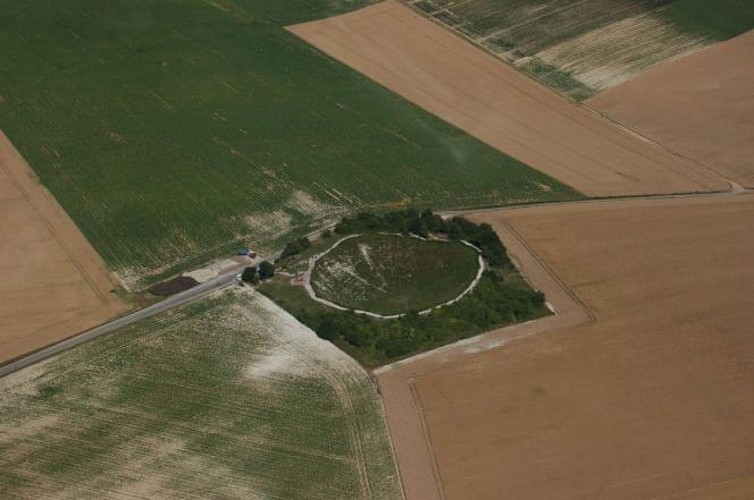
Lieux de mémoire Lochnagar Crater OVILLERSLABOISSELLE Ovillers
Location. The Lochnagar Crater is within the Commune of Ovillers-la Boisselle and is located close to the village of La Boisselle to the south of the D929 between the town of Albert and the village of Pozières. On arrival at La Boisselle look out for the signs to the La Grande Mine. the Crater is south south-east of the village a short way.

Lochnagar Mine Crater, OvillerslaBoisselle, Somme, France Stock Photo
Lochnagar Crater is located on the southern part of the 1916 Somme battlefields to the south of the D929 Albert-Bapaume road and immediately south of the village of La Boisselle. From the D929 enter the village of La Boisselle in the direction of Contalmaison. Take a right turn which will be signposted to the crater with a sign for "La Grande.
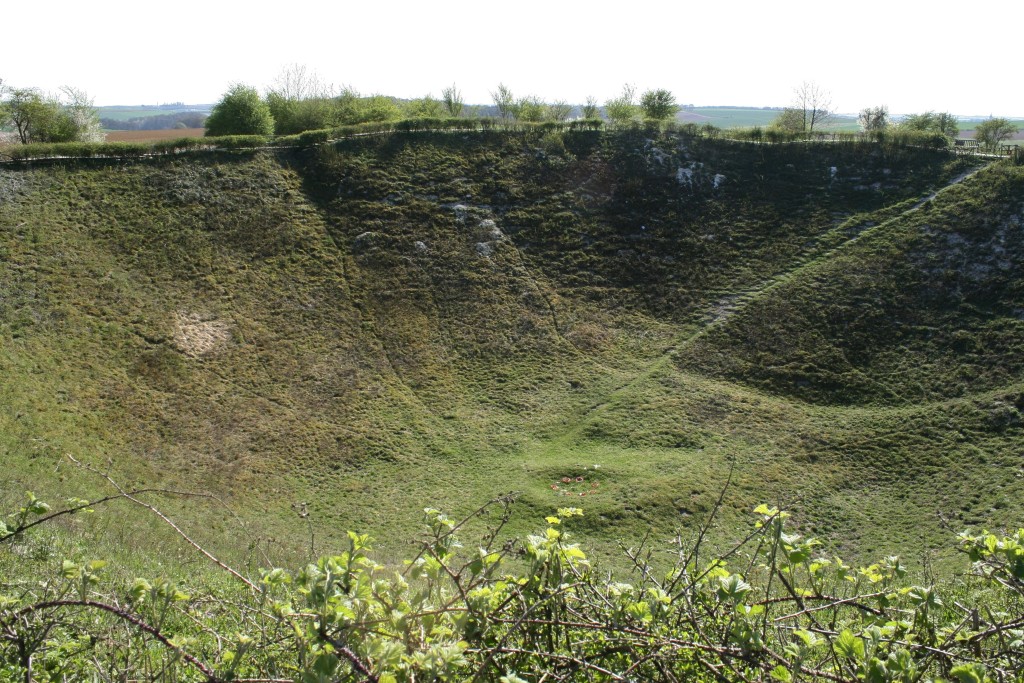
Travels on the Somme Part Fourteen La Boisselle The Lochnagar Crater
A well preserved mine crater from the first world war. A boardwalk allows you to walk around, information panels tell the story. Follow signs 'La grand mine' from La Boisselle. On road parking just before crater. Sat-navs may direct you down tracks, take care.
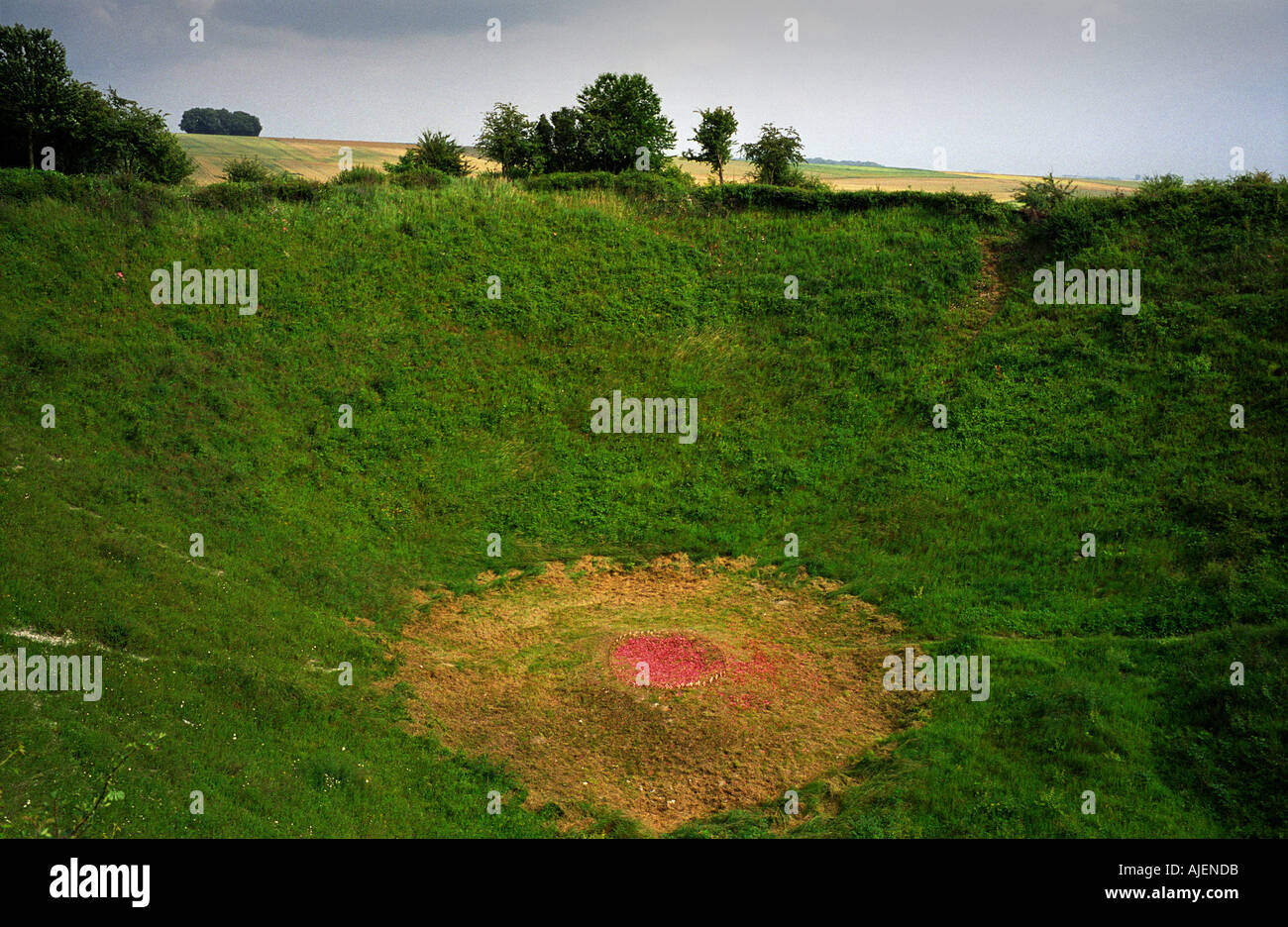
WW1 1914 1918 WORLD WAR ONE LA BOISSELLE LOCHNAGAR CRATER ON THE Stock
Along the D20 in La Boisselle a sign points to the right to 'La Grande Mine'. High on a hill outside the village is 'La Grande Mine', a great crater known to.

Lochnager Crater at la Boisselle on the Somme in France Stock Photo Alamy
Just as the road from the Lochnagar Crater rejoins the main D929 is the la Boiselle Tyneside memorial seat. This location is just to the north-west of the 'Glory Hole' and also almost exactly on the British front line of July 1st, 1916.. La Boisselle, Pozieres and Contalmaison. This explains the high number of unidentified burials.

Lochnagar Crater (OvillerslaBoisselle) ATUALIZADO 2022 O que saber
The Crater today is very much a place for quiet reflection and the only one of its kind open to the public. 5 minutes from Albert at La Boisselle, "Lochnagar Crater" is a blast hole, now 100 years old, one of a series of explosions which marked the beginning of the Battle of the Somme on 1st July 1916. Its spectacular size (91 metres across and.

Trou de mine de La Boisselle (Lochnagar Crater)(80) YouTube
Meaning, sufficient explosive was used to, not only break the surface and form a crater, but enough to cause spoil to fall in the surrounding fields and form a lip around the Crater of approximately 15ft high, to protect the advancing British troops from enfilade machine-gun fire from the nearby village of La Boisselle. The Crater was captured.

Number 56 Galleries Lochnagar Crater and the Glory Hole La Boisselle
Mine crater at la Boiselle just after the War. Photo from Michelin Guide to the Somme Battlefields. top la Boiselle. An area just to the south of the main D929 road was known as the Glory hole. Here, the front lines were extremely close together, and small mines had been blown by both sides to try and gain some advantage.. La Boisselle.

La Boisselle, cráter de Lochnagar YouTube
The Lochnagar mine south of the village of La Boisselle in the Somme département was an underground explosive charge, secretly planted by the British during the First World War, to be ready for 1 July 1916, the first day on the Somme.The mine was dug by the Tunnelling Companies of the Royal Engineers under a German field fortification known as Schwabenhöhe (Swabian Height).
Panoramic (stitched) pic of Locnagar Mine Crater, near La Boisselle, in
The Y Sap mine was an underground explosive charge, secretly planted by the British during the First World War and ready for 1 July 1916, the first day on the Somme.The mine was dug by the Tunnelling Companies of the Royal Engineers under a German machine-gun nest known as Blinddarm in the front line, on the north side of the village of La Boisselle in the Somme département.
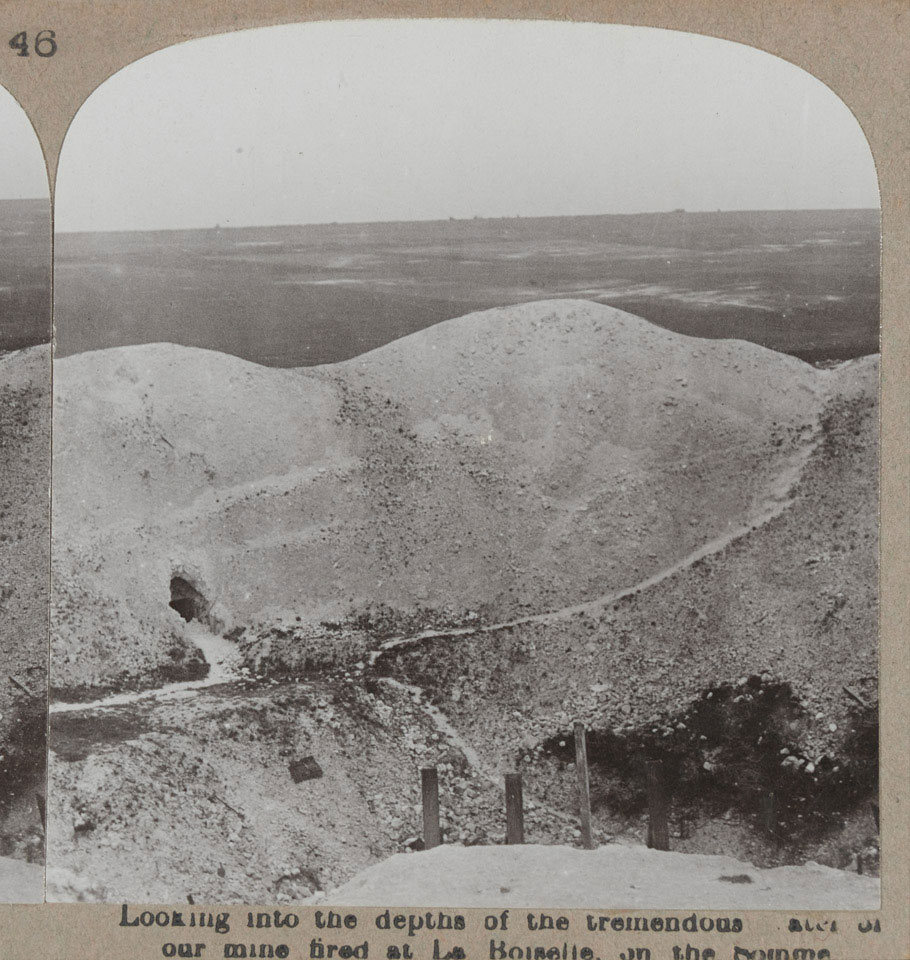
'Looking into the depths of the tremendous crater of our mine fired at
A large crater survived the war known as the Lochnagar crater or the Trou de mine de La Boisselle. The Lochnagar mine south of the village of La Boisselle in the Somme département was an underground explosive charge, secretly planted by the British during the First World War, to be ready for 1 July 1916, the first day on the Somme..

Lochnagar crater « La Boisselle » Département 80.
The mines were detonated by the Royal Engineers in the morning of Saturday 1 July, the opening day of the Battle of Albert (1-13 July), the name given by the British to the first two weeks of the Battle of the Somme. The British Third and Fourth armies, together with nine corps of the French Sixth Army, would attack the German 2nd Army in an.

Travels on the Somme Part Fourteen La Boisselle The Lochnagar Crater
Modern aerial photographs. Images taken 7 October 2011 by Terry Blackwood. All images are copyright La Boisselle Study Group and cannot be reproduced without their permission. Aerial oblique looking from Lochnagar Crater towards La Boisselle. The boundary of the Glory Hole site is marked. Aerial oblique looking from Lochnagar Crater towards the.
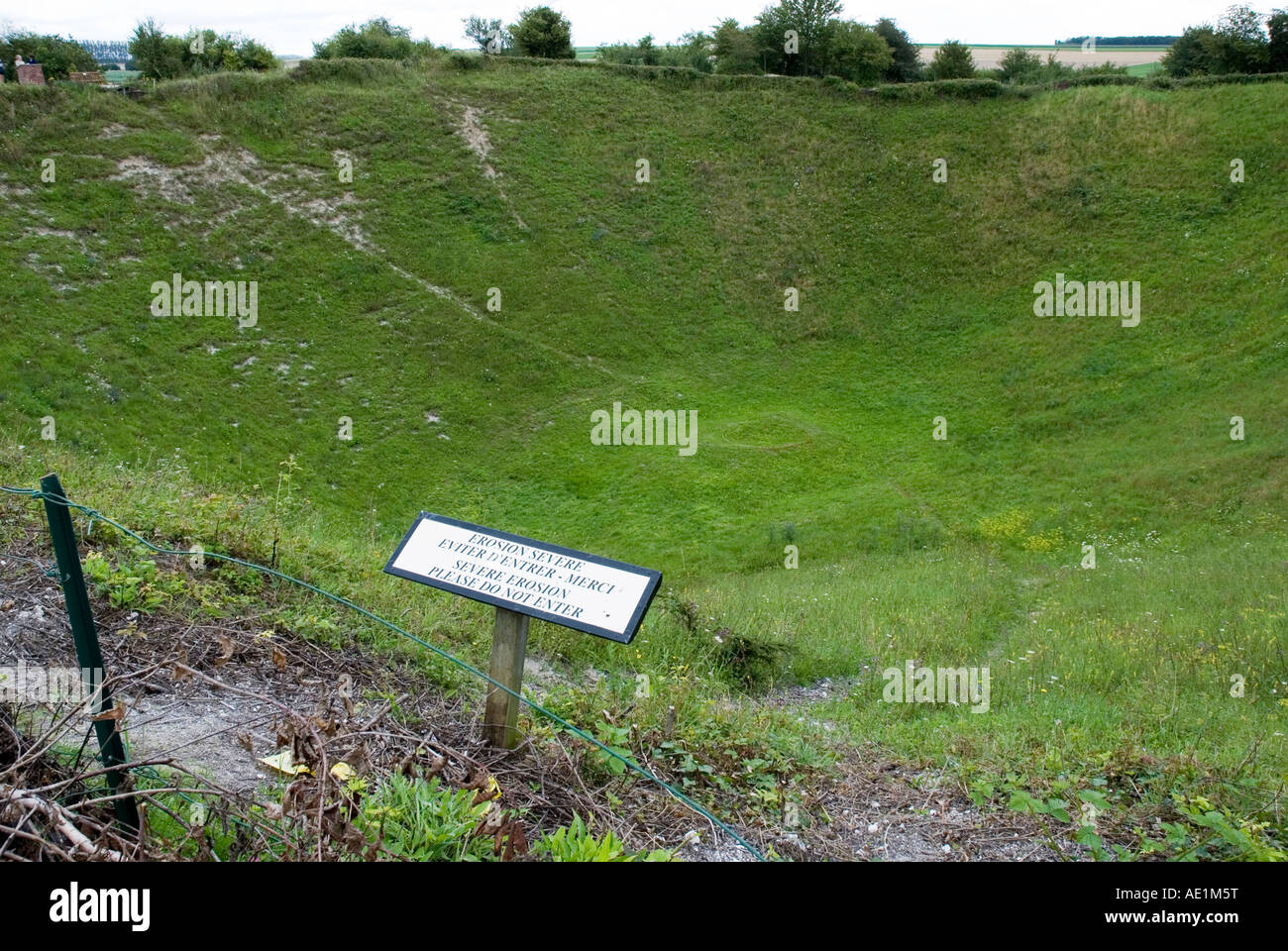
Lochnagar Crater at La Boisselle near Albert in the Somme Stock Photo
Captain Young had blown the mine crater of La Boisselle, the biggest of the Great War, a single, vast, smooth sided, flat bottom chasm measuring some 220 feet (67 metres) diameter excluding the lip, and 450 feet (137 metres) across the full extent of the lip. It had obliterated between 300 and 400 feet (91 and 122 metres) of the German dug-outs.

The Lochnager Crater, La Boisselle, Somme, France The Loch… Flickr
The Lochnagar Crater was created by a large mine detonated beneath the German front line by the British Army's 179th Tunnelling Company Royal Engineers, at 7:28am on July 1st, 1916. The explosion marked the beginning of the Battle of the Somme and was the largest of 19 mines, placed beneath the German front line to assist the British infantry.